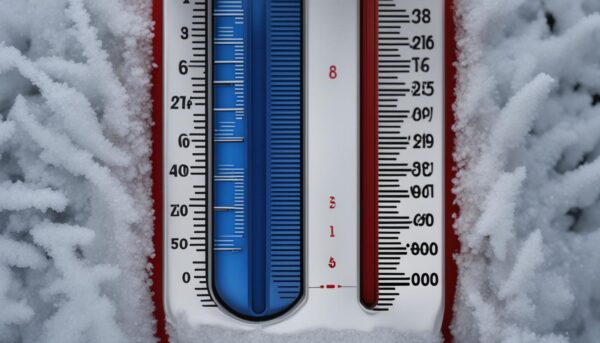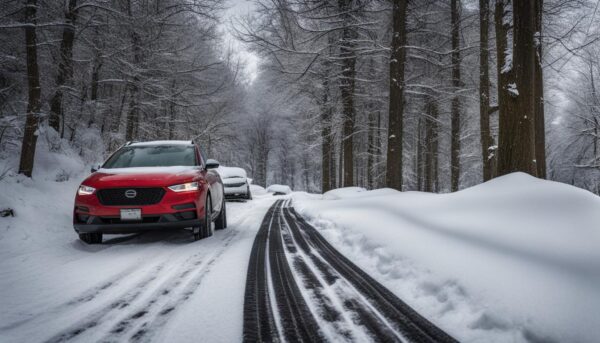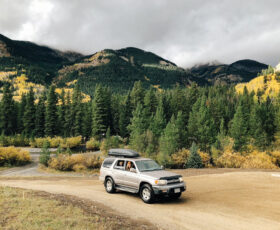Last Updated on 4 months
Winter Driving with Top Snow Tire Strategies
As winter quickly approaches, it’s time to start thinking about snow tires and other essential winter driving tips to enhance your safety on the road. With the right preparation and tire selection, you can ensure your vehicle is well-equipped to handle unpredictable winter weather. Explore the importance of snow tires, learn how to prepare for snow tire season, and discover popular options like the Bridgestone Blizzak and Michelin X Ice to help you confidently navigate icy roads. In addition to snow tire installation, consider other vehicle winterization steps to guarantee peak performance throughout the colder months.
Key Takeaways
- Investing in quality snow tires enhances safety during winter conditions.
- Understanding the differences between winter and all-season tires helps guide tire selection.
- Popular snow tire choices include Bridgestone Blizzak and Michelin X Ice.
- Proper snow tire installation and vehicle winterization improve overall performance.
- Regular tire maintenance and condition assessment ensure optimal traction and handling.
The Importance of Snow Tires for Winter Safety
In wintry weather, the choice of tires significantly affects a vehicle’s safety and control. Snow tires are designed to remain flexible and maintain a good grip in sub-zero temperatures. The tread pattern on snow tires is engineered to provide extra traction and minimize snow buildup, making them more effective than all-season tires in winter conditions.
Reliable winter tires outperform all-season tires’ starting and stopping ability on icy surfaces, offering better performance in snowy conditions. Choosing the best snow tires to enhance winter road safety and ensure peace of mind while driving in severe weather is essential.
| Snow Tire | Enhanced Traction | Winter Driving Control |
|---|---|---|
| Bridgestone Blizzak WS90 | Excellent | Superior |
| Michelin X-Ice Snow | Outstanding | Impressive |
| Goodyear WinterCommand Ultra | Great | Very Good |
Remember that while the best winter tires can significantly improve vehicle safety, cautious driving behaviour in winter weather is irreplaceable. Adapting your driving habits to suit different winter conditions, such as reduced visibility or slippery roads, is vital in ensuring your safety and that of other road users.
- Slow down and maintain a safe distance from other vehicles.
- Accelerate and decelerate gently to maintain control on icy or snowy roads.
- Plan your route and give yourself extra time to reach your destination.
- Use your brakes cautiously and avoid abrupt steering movements.
- Keep your vehicle well-maintained to ensure optimum performance in winter conditions.
“Snow and ice pose a unique challenge for vehicle control, and being prepared with the right set of tires can make all the difference in winter driving.”
Snow tire safety should never be underestimated, and investing in a high-quality set of snow tires can dramatically improve your driving experience during the winter months. Stay prepared and enhance your winter road safety by equipping your vehicle with the best snow tires.
Understanding Snow Tires Versus All-Season Tires
Winter tires, often called snow tires, boast a specialized design that ensures superior traction in cold temperatures, even without snow. Their flexible compound stays pliable below 45 degrees Fahrenheit, accommodating better contact with the road surface, thus offering improved traction compared to all-season tires. The unique tread pattern on winter tires also contributes to better maneuverability in snowy conditions.
Winter Tires 101: The Basics
Winter tires are crafted to provide excellent grip and control in winter driving conditions. They are made from flexible rubber tires designed to stay soft in cold weather, enabling better road grip and improved traction. These attributes help stabilize and control slippery surfaces, making winter tires recommended for anyone driving in areas with frequent snow or ice.
“Winter tires are designed to provide improved traction, control, and flexibility in cold conditions – a key factor in safely navigating snowy and icy roads.”
Winter Tires vs. All-Season Tires: Flexible Rubber for Cold Weather
The primary distinction between winter and all-season tires lies in the rubber compound and tread design. Winter tires utilize a flexible rubber that maintains softness even in cold weather, facilitating better road grip. In contrast, all-season tires tend to harden as temperatures drop, reducing traction. All-season tires with the 3-Peak Mountain Snowflake symbol offer a compromise, providing adequate performance in various conditions. However, they are less optimal than winter tires in severe cold and snow.
- Winter Tires: Flexible rubber compound, unique tread design, better traction in cold temperatures, and more effective in snowy and icy conditions.
- All-Season Tires: Harder rubber compound, more versatile tread design, reduced traction in cold temperatures, and suitable for various weather conditions, but may underperform in extreme winter conditions.
- All-Season Tires with 3-Peak Mountain Snowflake Symbol: Combination of winter and all-season tire elements, adequate for various conditions, though lacking optimal performance in severe cold and snow compared to dedicated winter tires.
| Tire Type | Rubber Compound | Tread Design | Performance in Cold Temperatures |
|---|---|---|---|
| Winter Tires | Flexible Rubber | Unique, snow-optimized | Superior traction and grip |
| All-Season Tires | Harder Rubber | Versatile, all-weather | Reduced traction in cold temperatures |
| All-Season Tires with 3-Peak Mountain Snowflake Symbol | Combination of Flexible and Hard Rubber | A combination of winter and all-season design | Adequate performance for various conditions |
Whether to opt for dedicated winter tires or versatile all-season tires depends on where you live, the severity of the weather conditions in your region, and your driving habits. It is essential to consult with a tire professional for tailored advice and snow tire recommendations to ensure optimal performance and safety while navigating winter driving conditions.
Choosing the Right Snow Tires for Your Vehicle
Selecting the appropriate snow tires for your vehicle involves carefully considering various factors, including the vehicle type, tire size, and expected winter conditions. Premium models, such as Bridgestone Blizzak and Michelin X Ice, are celebrated for their exceptional performance and durability in winter. To ensure you make the right choice, consult a snow tire buying guide and look for tires that bear the 3-Peak Mountain Snowflake symbol – a mark that denotes a tire’s capability to handle severe snow conditions. Experts suggest installing winter tires when temperatures consistently dip below 45 degrees Fahrenheit and doing so before the peak of the winter season.
Here is a breakdown of some vital factors you should consider when selecting the best snow tires for your vehicle:
- Vehicle type: Ensure that the snow tires you choose are compatible with your vehicle’s make and model.
- Tire size: Ensure the winter tire size aligns with your vehicle’s specifications for optimal performance.
- Expected winter conditions: Assess the typical winter conditions in your region to determine the most suitable snow tire type (studless, studded, or all-season).
- Reputable tire brands: Opt for renowned tire brands like Bridgestone Blizzak and Michelin X Ice, known for their superior performance in winter conditions.
- Performance ratings: Review professional ratings and customer feedback regarding the snow tires’ overall performance, traction, and durability.
To further assist with your decision-making process, the following table provides a list of recommended top-rated snow tires for different vehicle types, taking into account the factors mentioned above:
| Vehicle Type | Top-Rated Snow Tire Model | Key Features |
|---|---|---|
| Passenger Cars | Bridgestone Blizzak WS80 | Excellent traction on snow and ice, 3-Peak Mountain Snowflake symbol, long-lasting compound |
| Sports Cars & Performance Vehicles | Michelin X-Ice Snow | Enhanced grip and handling, low rolling resistance, extended tread life |
| SUVs & Crossover Vehicles | Continental WinterContact SI | Remarkable snow and wet traction, responsive handling, and low road noise |
| Pickup Trucks | Cooper Discoverer M+S | Excellent off-road performance, durable construction, and great snow and ice traction |
In conclusion, choosing the right snow tires for your vehicle can significantly impact your experience navigating harsh winter conditions. You can enhance safety and performance during winter drives by considering vehicle type, tire size, and expected winter conditions, and opting for top-rated snow tires like Bridgestone Blizzak and Michelin X Ice.
The Signs It’s Time to Switch to Snow Tires

Knowing when to install snow tires is essential for maintaining safety and optimal performance during the winter months. Two factors to monitor when considering this transition are temperature thresholds for winter tires and the tread depth of your current tires.
Temperature Thresholds for Winter Tires
Unlike all-season tires, winter tires are flexible and provide improved traction when ambient temperatures consistently fall to 45 degrees Fahrenheit or lower. This is the optimal tire temperature threshold that indicates it is time to switch to winter tires to ensure maximum grip on slippery roads.
Assessing Tread Depth Before the Snow Falls
Before winter arrives, it’s crucial to assess the tread depth of your current tires. A deeper tread depth contributes to better traction and grip in snowy conditions. When monitoring your snow tire readiness, consider the following tread depth recommendations:
| Tire Type | Minimum Tread Depth | Ideal Tread Depth |
|---|---|---|
| Winter Tires | 4/32-inch (3mm) | 6/32-inch (5mm) or more |
| All-Season Tires | 3/32-inch (2mm) | 5/32-inch (4mm) or more |
It is generally recommended to replace snow tires before they become overly worn to ensure optimum performance and safety. Regular checks for tread wear can help determine the appropriate time to switch out tires for those specifically designed for winter weather conditions.
In conclusion, monitoring both temperature thresholds and tread depth is essential for assessing snow tire conditions and determining when a transition to snow tires is necessary. This proactive approach will enhance your vehicle’s traction and safety in challenging winter driving conditions.
Features of Top-Rated Snow Tires to Look For
When choosing the best snow tires for your vehicle, knowing the features that set top-rated snow tires apart is essential. Coherent design elements contribute to the overall performance in snowy and icy conditions, ensuring your safety and providing optimal traction during winter driving. Here are some key aspects to watch out for:
- Tread design for snow and ice traction
- Flexible compounds for cold temperatures
- Presence of the 3-Peak Mountain Snowflake symbol
- Options for studded or studless tires
Let’s dive deeper into what to look for in the best snow tires:
Expert recommendations and detailed snow tire reviews can be invaluable in making a confident and informed decision on the best tires for your specific winter driving needs.
- Tread Design: Top-rated snow tires feature a deep and aggressive tread pattern, improving grip on snowy and slippery surfaces. The treads should work efficiently to displace slush and keep the tires in contact with the road, which is crucial for maintaining control and stability.
- Flexible Compounds: Look for snow tires with special rubber compounds that maintain flexibility in cold temperatures. As the temperature drops, traditional all-season tires become rigid and lose traction, while winter-rated tires adhere better to icy and wet roads.
- 3-Peak Mountain Snowflake Symbol: This emblem signifies that the tire meets the required performance criteria in snow testing set by the industry. It is a reliable indicator that the tire has been designed for severe snow conditions. Always look for this symbol when purchasing winter tires.
Studded or Studless Options: Studded snow tires boast metal studs that protrude from the tread, providing unmatched ice traction. However, they can be noisy, potentially damaging roads, and prohibited in certain areas. Studless snow tires, on the other hand, offer a quiet ride and excellent snow traction without studs. Before deciding, consider local regulations and the severity of ice typically encountered in your region.
To further assist your search for the perfect snow tires, the following table highlights the key features of some popular, top-rated models:
| Brand and Model | 3-Peak Mountain Snowflake | Studded or Studless | Main Features |
|---|---|---|---|
| Michelin X-Ice Snow | Yes | Studless | Flexible winter compound, V-shaped tread pattern, and innovative sipe technology for improved ice traction |
| Bridgestone Blizzak WS90 | Yes | Studless | Multicell hydrophilic compound, optimized contact patch, and 3D sipes for superior control in winter conditions |
| Nokian Hakkapeliitta 9 | Yes | Studded | Functional stud concept, eco-friendly winter compound, and directional tread pattern for optimal grip and stability |
In conclusion, when selecting top-rated snow tires, consider the critical features for unbeatable performance in challenging winter conditions. Researching detailed reviews can also aid in making the right choice. Investing in reliable, high-quality snow tires will ensure safer and more confident driving during those cold winter months.
Why Snow Tires are an Investment in Your Safety
For those living in regions with harsh winters, investing in snow tires is crucial for ensuring safety on the road. Although the cost of winter tires may initially seem high, the snow tire benefits far outweigh the expense. This section will explore the economic analysis of snow tires and explain how quality winter tires extend vehicle performance.
Cost vs. Benefit Analysis of Snow Tires
On average, a winter tire ranges from $175 to $250 per tire. The cost can vary depending on factors such as the vehicle type and tire brand. It’s important to weigh the expenses against the safety and performance advantages of equipping your vehicle with winter tires.
A single accident caused by inadequate traction or control can not only endanger your life but also result in costly repairs and increased insurance premiums.
With durable winter tires, drivers benefit from improved traction and handling capabilities, which can be especially valuable for those who regularly drive in temperatures below 45 degrees. In such conditions, all-season tires may not perform optimally, making it smart to invest in a good set of winter tires.
How Quality Winter Tires Extend Vehicle Performance
Choosing quality winter tires directly impacts vehicle performance during the colder months. By opting for reliable and durable winter tires, drivers can enjoy:
- Consistent traction on icy and snowy roads
- Shorter stopping distances
- Better control during maneuvering
High-quality winter tires are constructed to withstand seasonal wear and provide reliable performance for three to four seasons. However, the lifespan of the tires can vary depending on factors like usage and driving conditions. To maintain peak performance, assessing the tires’ condition after each season is recommended, ensuring you are never caught off guard during those icy months.
In conclusion, while purchasing snow tires may entail a significant upfront expense, the benefits of enhanced safety and vehicle performance make them a wise investment. Protecting yourself, your passengers, and your car during the winter months is a priority that should not be taken lightly. Investing in quality winter tires is essential to a safer, more secure driving experience in harsh weather conditions.
Studless vs. Studded Snow Tires: Which is Right for You?
When deciding between studless snow tires and studded snow tires, it’s essential to consider individual driving conditions and local regulations. Both options have benefits and drawbacks, depending on your driving needs and climate.
Studless snow tires offer dependable snow traction and maintain a moderate noise level, making them suitable for most winter scenarios. On the other hand, studded snow tires provide extra gripping power on ice but tend to produce more noise and can damage roadways. It’s crucial to verify local laws before choosing studded tires, as some regions may have restrictions or seasonal limitations.
Always check local regulations before making your winter tire choice.
To better understand the differences between these two winter tire choices, consider the following table comparing their performance and potential drawbacks:
| Type of Snow Tire | Traction on Ice | Noise Level | Road Damage |
|---|---|---|---|
| Studless Snow Tires | Good | Low to moderate | Minimal |
| Studded Snow Tires | Excellent | Higher | Potential for damage |
When comparing snow tires, you must reflect on your driving needs, local climate, and legal restrictions. Remember the performance benefits of each tire type, and consider seeking professional advice for tailored recommendations.
The Lifespan of Snow Tires and When to Replace Them

Understanding the lifespan of snow tires is essential for drivers who want to maximize the performance and safety of their winter tires. The lifespan of snow tires is generally three to four seasons, depending on factors such as the amount of driving, tire quality, and proper seasonal use.
Regular inspections are key to determining whether to replace your winter tires. It is advisable to do so before they are entirely worn out to maintain balanced handling and grip. Tire wear will accelerate if snow tires are used year-round, so seasonal rotation between winter and all-season tires can extend their lifespan.
Always use a full matching set of winter tires to ensure optimal performance and safety.
- Check for visible signs of wear and tear
- Keep track of the miles driven on your winter tires
- Pay attention to uneven tread wear
By following these guidelines, drivers can better understand when the time comes to replace winter tires and maintain their vehicle’s overall performance and safety in winter driving conditions.
| Factors Affecting Snow Tire Lifespan | Impact on Lifespan |
|---|---|
| Amount of Driving | More miles driven on snow tires may shorten their lifespan |
| Tire Quality | Higher-quality tires are likely to last longer |
| Seasonal Use | Using snow tires year-round will cause them to wear out faster |
In conclusion, understanding the lifespan of snow tires and replacing winter tires when necessary is essential for maintaining optimal vehicle performance and safety during cold-weather driving. Regular inspections and proper seasonal rotation between winter and all-season tires can help extend their durability and save drivers money in the long run.
Conclusion
As winter approaches, it’s essential to prioritize snow tire season preparation to ensure your vehicle is ready for the challenges of driving during this time of year. Choosing the right snow tires is crucial to winter driving safety, as they offer enhanced control and better performance in cold, snowy conditions. Factors such as your local climate, driving habits, and regional regulations should be considered when selecting various performance snow tires.
Investing in a quality set of snow tires can make a substantial difference in safely navigating winter roads. Regularly assessing your tires’ condition and properly timing the installation is essential in preparing for the snow tire season. Remember that winter tires are a wise investment in your vehicle’s performance and safety. So, getting the right snow tires for your car will ensure a safer winter driving experience.
In conclusion, as we put together our final thoughts on snow tires, it’s clear that selecting the appropriate tires and investing in their maintenance can significantly enhance your winter driving experience. You can safely navigate the most challenging winter roads with the right snow tires. Always consult professionals and consider the unique conditions of your area to make an informed decision, ensuring you get the most out of your winter tire investment.
FAQ
What is the difference between snow tires and all-season tires?
The primary difference lies in the rubber compound and tread design. Winter tires use flexible rubber that maintains softness in cold weather for better grip, while all-season tires harden in low temperatures, reducing traction. All-season tires with the 3-Peak Mountain Snowflake symbol provide adequate performance in various conditions but don’t perform optimally in severe cold and snow.
How do I choose the right snow tires for my vehicle?
Consider vehicle type, tire size, and expected winter conditions. Look for tires with the 3-Peak Mountain Snowflake symbol and choose renowned brands like Bridgestone Blizzak and Michelin X Ice. It is best to consult with tire professionals for tailored advice.
When should I install snow tires on my vehicle?
Install winter tires when temperatures consistently dip below 45 degrees Fahrenheit. It’s suggested that winter tires be transitioned before the peak of the winter season.
What features should I look for when buying top-rated snow tires?
Consider factors such as tread design for snow and ice traction, flexible compounds for cold temperatures, and the presence of the 3-Peak Mountain Snowflake symbol. Review detailed snow tire ratings and expert recommendations to ensure the chosen tires meet your driving needs and weather conditions.
How much will snow tires cost?
The cost varies based on vehicle type and tire brand, with an average price range of $175-$250 per tire. Despite the cost, they offer significant safety improvements in severe weather conditions, making the investment worthwhile.
How long do snow tires last?
High-quality winter tires typically provide reliable performance for three to four seasons. However, the lifespan can vary depending on usage and driving conditions. Regular assessment of the tires’ condition after each season is recommended to maintain peak performance.
Should I choose studless or studded snow tires?
This depends on your driving conditions and local regulations. Studless tires offer good snow traction and a quieter ride, suitable for most winter scenarios. Studded tires provide extra gripping power on ice but potentially damage roadways and are often subject to legal restrictions or limitations.
Source Links









